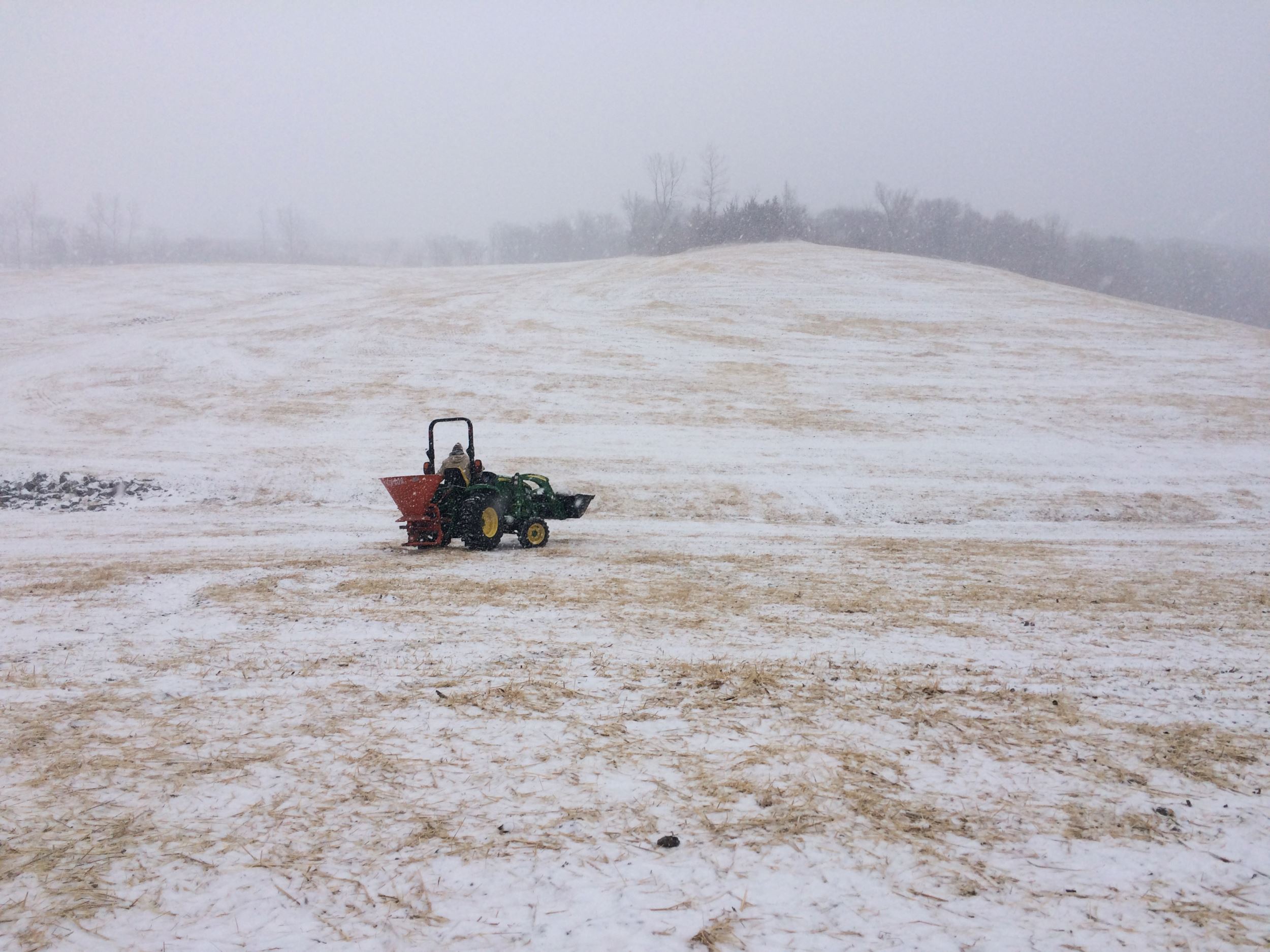Return to Wild
By Katy Heggen on June 6, 2018 in Blog

Before
"Iowa" and "mining" are not words commonly associated with one another, at least not anymore. But in some parts of the state, the two have a long history that has left its mark on the natural landscape.
Coal mining in Iowa dates back to the 1840s, most present in the southern and southeastern part of the state. It peaked in the early 1980s before production declined and ceased in 1994, but remnants of that activity remain.
Most abandoned mines in Iowa are surface mines, where mining cuts coal from above the surface, leaving behind pits and piles of earth, some stretching for acres. Left unaddressed, these sites can cause serious damage.
“Spoil material is very erosive,” said Randy Cooney, a project coordinator with the Iowa Department of Argiculture and Land Stewardship (IDALS). “Materials from barren spoil piles can get into waterways, erode gullies, clog streams and stunt vegetation growth — if anything grows at all.”
The DeCook family’s land in Marion County is home to several abandoned mine sites. Most have managed to blend into the landscape, but one site in particular needed help.
“It didn’t look very good,” Mike DeCook said. “There were big bare spoils, next to no vegetation and a small pond at the bottom of the gulch that you could tell was acidic. Of course, we were concerned about water quality. We thought this would be a good area to reclaim and make better.”
In 1977, Congress passed the Surface Mining Control and Reclamation Act (SMCRA). SMCRA created the Abandoned Mines Land (AML) Reclamation Program, which collects a reclamation fee on each ton of coal produced in the U.S. and deposits it into a trust. These funds are allocated to IDALS for mine reclamation projects.
“There are over 300 abandoned mine sites in Iowa,” Cooney said. “To date, we’ve reclaimed about 100.”
“With these projects, the land is privately owned, but there’s a community benefit, too,” said Anna Bruen, executive director of Pathfinders RC&D, which has partnered with IDALS to help secure funding and support for more than 40 mine reclamations. “Reclaiming these sites protects public health, preserves our waterways and enhances soil health. It’s about being good stewards of the land.”

Prairie seeding
Mike, his brother, Dan, and their parents, Mark and Kay, have spent the last two decades re-wilding their lands. To date, INHF holds permanent conservation easements on 2,700 acres owned by the DeCooks in Monroe, Marion and Lucas counties. It was important to them that the way they approached the project fit with their larger vision for the land.
“We wanted to mimic nature as much as possible,” Mike said. “We tried the best we could to get it as close to what it might have looked like before coal mining.”
Focusing on a natural hydrology design — one of only three mine reclamation sites in the state to feature a natural design — Mike worked with Cooney and INHF to regrade the area and do a 16-acre prairie seeding.
“This was a unique opportunity for us to get natural land back on the landscape, but what really excited me about this project was all the partnerships,” said INHF Land Stewardship Director Ryan Schmidt. “More and more we’re finding creative, non-traditional partnership opportunities are required to get restoration done. No individual or public or private entity can do it alone.”

After
Today, the site is hardly recognizable. Barren spoil piles, eroded gullies and clogged streams have been replaced with strategically graded slopes, rock structures and wetlands — all built to mimic nature. INHF helped seed the prairie — which includes more than 75 native species — this past February. Mike plans to plant additional oaks on the northeast corner. He’s looking forward to watching everything and all it represents take root.
“Visually, the flow of the landscape looks a lot better,” Mike said. “When I walk around this place now, I just think about how important our natural heritage is. So much of Iowa’s land has been converted. It’s really rewarding to re-wild it.”